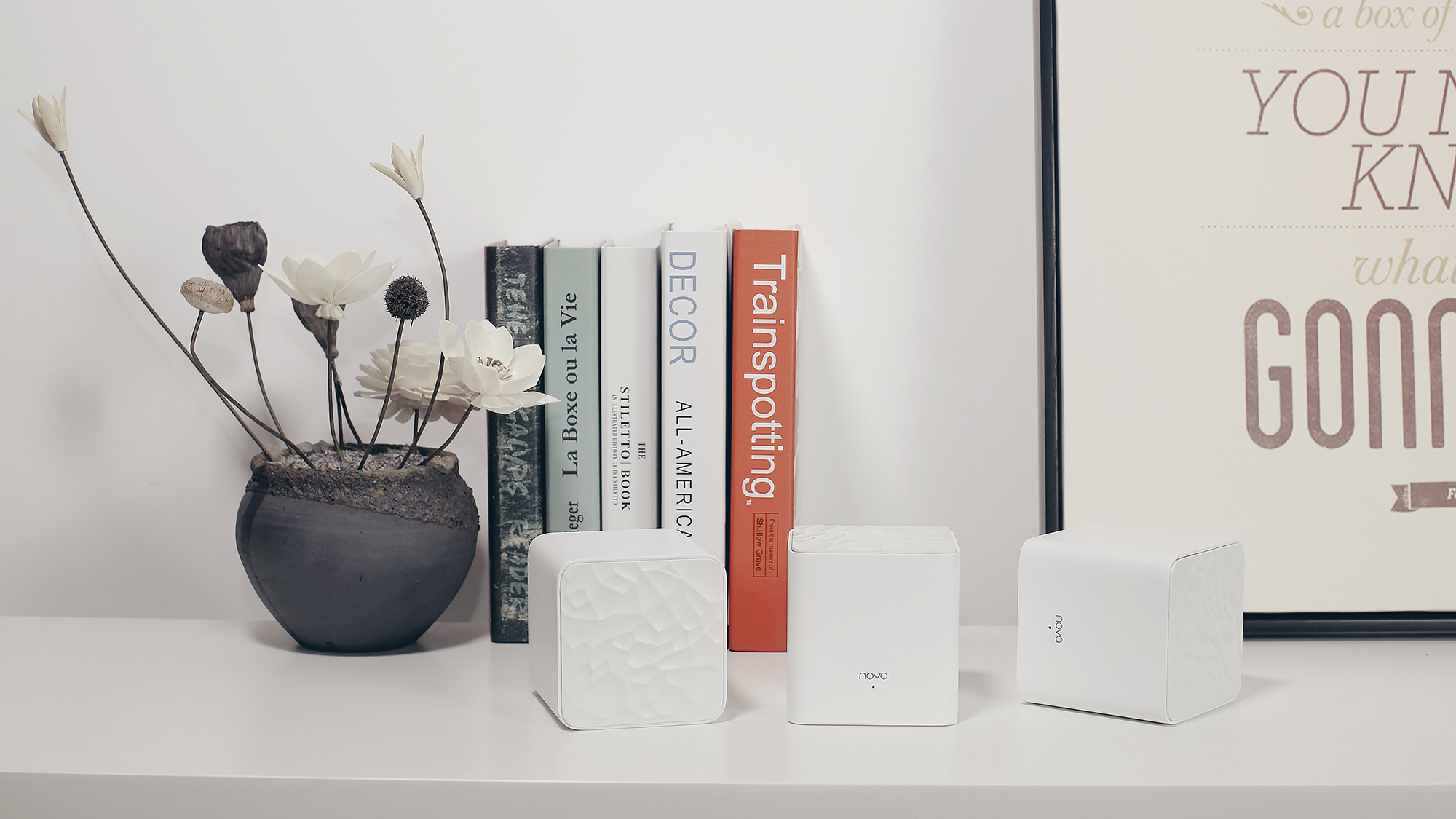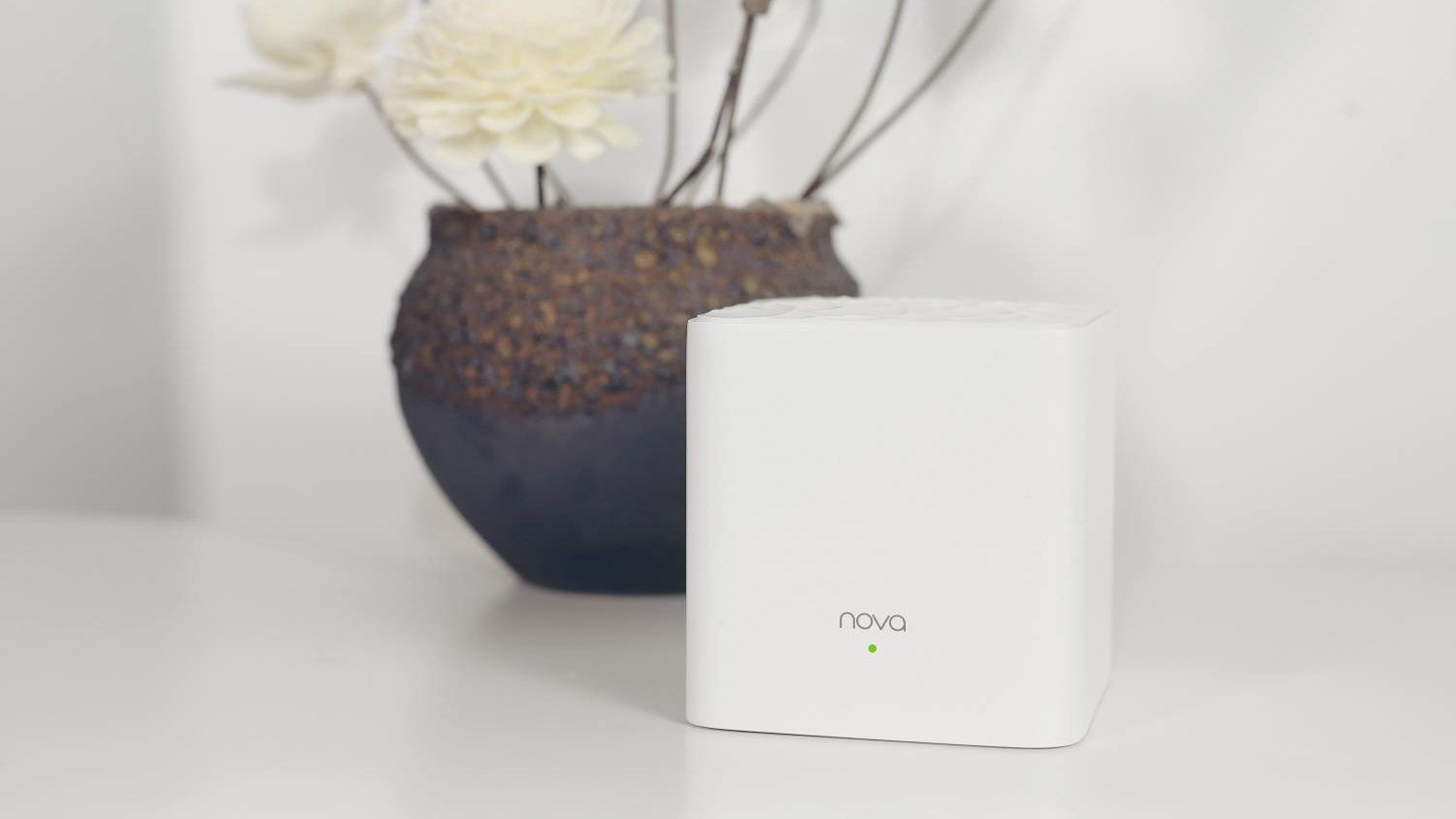Tenda Nova MW3 review: Cheap but very cheerful mesh Wi-Fi
The cheapest mesh wireless kit we’ve come across: what it loses in speed, it makes up for in convenience
It may lack some of the rich features and configuration options of other mesh Wi-Fi systems and the speed isn't exactly top-class, but this mesh system is convenient to set up and cheap as chips.
-
+
Great price; Hassle-free setup
-
-
Speed isn't the best; Ethernet ports are only 100Mbits/sec; Configuration options are slightly lacking





Mesh networking kits aren't cheap - or at least, that's the received wisdom. Tenda's Nova MW3 system turns that on its head: for less than the cost of a regular mid-range router, you get a full set of three Wi-Fi nodes, ready to distribute wireless connectivity to the far reaches of your property. At such a low price, can it possibly be any good?
First signs are excellent. The MW3 units are inconspicuous white cubes, with bumpy tops to add a hint of visual interest. They're small too, measuring just 90mm on each side, so they won't dominate a shelf or worktop. Getting set up is astonishingly easy. Once you've powered up your first node, and hooked it up to your modem, the Tenda smartphone app automatically sets up your internet connection and invites you to specify a name and password for your new wireless network.
Then it's a simple matter of carting the other two nodes into different rooms, plugging each one in and waiting a few minutes while they boot up and receive their settings from the primary unit. A coloured LED on each unit will warn you if it's too far away from its brethren to get a good signal.
There's nothing more to configure unless you want to apply custom network settings. You can optionally enable an isolated guest network, configure port forwarding and set up simple access controls, which let you block internet access for specific clients during defined times.

A few key features are conspicuously missing, though. For one, you can't bind IP addresses to specific devices, which might annoy those who want to precisely replicate their old network. There's also no proper access point mode. If you connect the Tenda system to your existing router, it'll operate as a separate subnet, which means some clients might not be able to communicate with each other. Hopefully, that'll be resolved in a future firmware update.
As well as 802.11ac wireless, each node offers two Ethernet connectors. That's par for the course for compact mesh systems, but it always feels rather constraining -- especially since one port on the primary node is taken up by the connection to your broadband modem.
For several reasons, we weren't expecting the Nova MW3 to deliver exceptional performance. For one, its 5GHz radios claim a fairly modest maximum data rate of 867Mbits/sec, which is half the speed of the units in the BT Whole Home Wi-Fi system.
What's more, since there's only one radio per unit, your devices have to share that bandwidth with "backhaul" traffic as it's forwarded from node to node. The small size of the nodes meanwhile limits the size and, therefore, the range of the internal antennae: the three-node Tenda kit promises coverage up to 300m2, while the BT system offers a much more generous 420m2.
In use, though, we found the Tenda MW3 delivered a solid, if not exactly speedy, connection. Having distributed the units along the length of our building, we were able to download files from our NAS drive to an 802.11ac-enabled laptop at average rates of 9MB/sec, 8MB/sec and 7MB/sec across various rooms.

That's low compared to the best new standalone routers and falls behind other mesh networks too. The BT Whole Home Wi-Fi system was more than twice as fast in one room and never slower than 12MB/sec anywhere in our property. Frankly, the discrepancy was larger than we'd expected.
A skim of the Tenda's technical specifications revealed the explanation. Alongside lightweight Wi-Fi hardware, the MW3 nodes also use 100Mbits/sec Ethernet ports, rather than the Gigabit type we're accustomed to. That puts a hard speed limit of around 10MB/sec on all wired resources -- including your NAS drive and your internet connection. This doesn't have to be a deal-breaker, though. The system was still nippy enough to give us the full speed of a 50Mbits/sec (around 6MB/sec) fibre connection all through my home.
If you're looking for superfast downloads or if you regularly access big files from a home NAS drive, then the Tenda Nova MW3 clearly isn't the right product for you. That doesn't mean it's a write-off, though. The MW3 system cleared up the notspots in our building, with practically zero configuration required on our part. And the connection was still perfectly fast enough to browse the web, ping sensibly-sized files back and forth over our network and even stream 4K video. At this price, we suspect it will make a lot of people very happy.
Get the ITPro daily newsletter
Sign up today and you will receive a free copy of our Future Focus 2025 report - the leading guidance on AI, cybersecurity and other IT challenges as per 700+ senior executives
Darien began his IT career in the 1990s as a systems engineer, later becoming an IT project manager. His formative experiences included upgrading a major multinational from token-ring networking to Ethernet, and migrating a travelling sales force from Windows 3.1 to Windows 95.
He subsequently spent some years acting as a one-man IT department for a small publishing company, before moving into journalism himself. He is now a regular contributor to IT Pro, specialising in networking and security, and serves as associate editor of PC Pro magazine with particular responsibility for business reviews and features.
You can email Darien at darien@pcpro.co.uk, or follow him on Twitter at @dariengs.
-
 Nvidia braces for a $5.5 billion hit as tariffs reach the semiconductor industry
Nvidia braces for a $5.5 billion hit as tariffs reach the semiconductor industryNews The chipmaker says its H20 chips need a special license as its share price plummets
By Bobby Hellard Published
-
 Business leaders are having a crisis of confidence over data literacy
Business leaders are having a crisis of confidence over data literacyNews A Salesforce survey reveals business leaders don't trust their data, or their ability to make the most of it
By Emma Woollacott Published
-
 MITRE CVE program handed last minute reprieve amid funding lapse concerns
MITRE CVE program handed last minute reprieve amid funding lapse concernsNews The MITRE Corporation's Common Vulnerabilities and Exposures (CVEs) database has been handed a last minute reprieve amid concerns over funding.
By Rory Bathgate Last updated